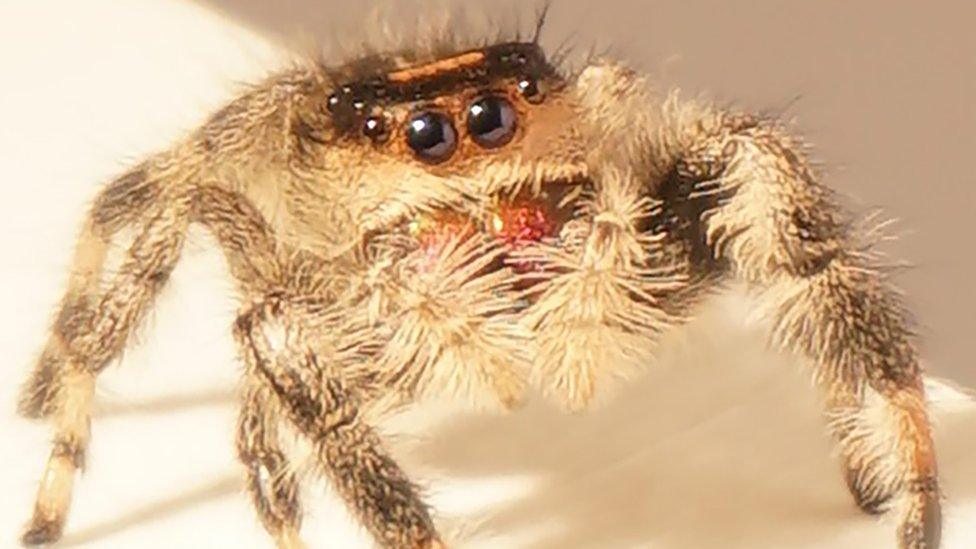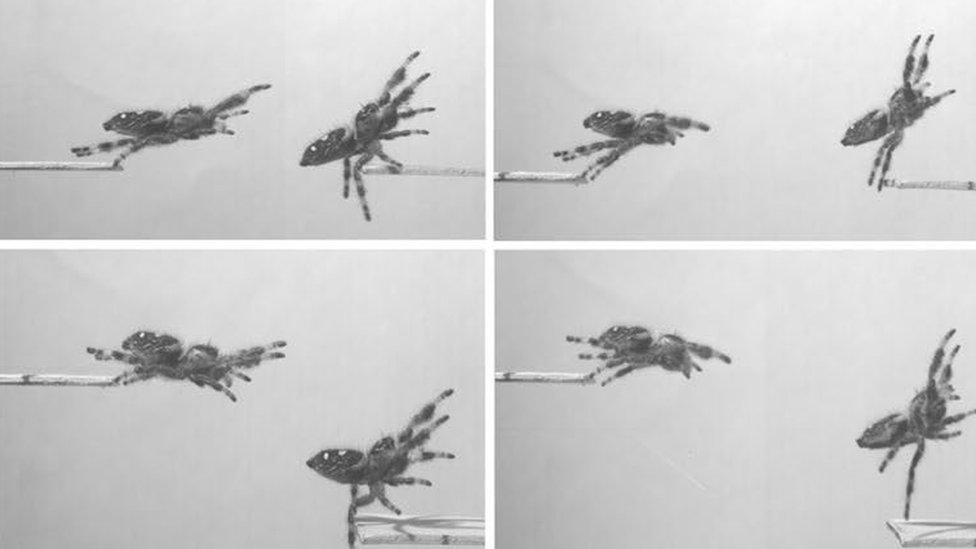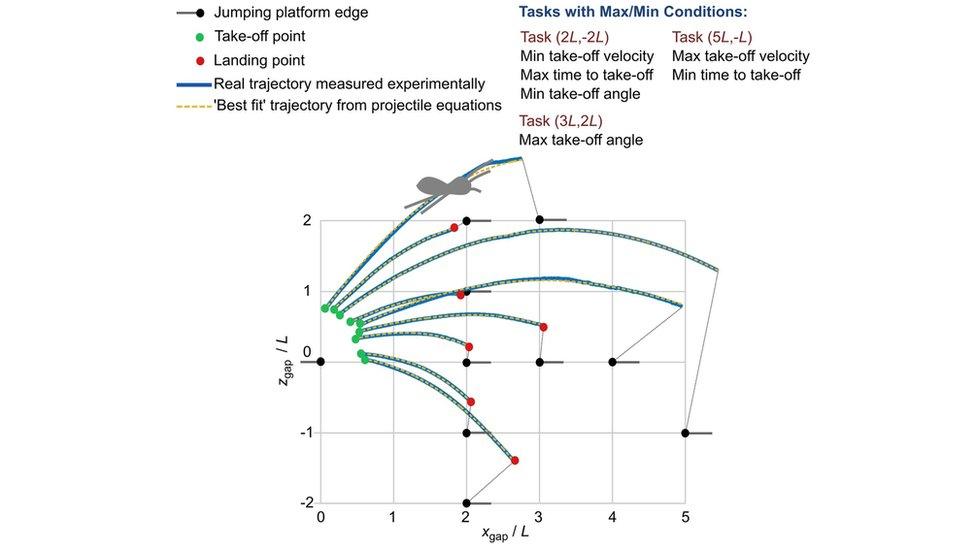How a spider jumps on its prey - science has the answer
- Published
Kim the regal jumping spider has been trained to jump on demand
Scientists have trained a spider to jump on demand.
The diminutive arachnid, which they nicknamed Kim, can leap six times her body length from a standing start.
Humans only manage about 1.5 body lengths.
Unlocking the secrets of her extraordinary leaps could help build a new generation of robots inspired by nature, say University of Manchester researchers.
The regal jumping spider (Phidippus regius) is known for its ability to make precision leaps to pounce on prey, including insects and small invertebrates.

Kim the spider
It is one of thousands of jumping spiders that are found worldwide and hunt actively rather than catching prey in a web. They have excellent vision, with four large eyes in front and four smaller eyes on the top of their head.
The research team filmed the jumping arachnid with high-tech cameras to discover the secrets of her extraordinary locomotion.

They also carried out 3D CT scanning to build a model of the spider's legs and body structure.
They found the spider used different jumping strategies, including a faster, lower trajectory for speed and accuracy, but, at other times, more energy-efficient jumps over a longer distance.
"She will jump at the optimal angle, which means that she can understand the challenge that she is presented with," said study researcher, Dr Mostafa Nabawy.
"And then she can time her jumping performance at take-off to execute a jump that is optimal in terms of energy demand."
Precision jumping
The scientists recruited a number of female spiders for their work, buying them at a pet shop in Manchester.
But only Kim obliged with making the required leaps when presented with a take-off and landing platform they built in the lab.
The data from the videos was analysed to understand the forces behind the jump and how they were generated.
"The force on the legs at take-off can be up to five times the weight of the spider - this is amazing and if we can understand these biomechanics we can apply them to other areas of research," said Dr Nabawy, an aeronautical engineer who is interested in designing new types of flying and jumping robots.
"Spiders have to plan everything, they have to execute accurate jumps and precise jumps to get their target [prey] as soon as possible and as accurately as possible."

Her jumps relied on muscle power alone, not hydraulic pressure (pumping fluid inside the legs to enhance muscle power), which has been mooted as a mechanism used by some spiders.
Thus, the role of hydraulic movement in spiders remains an open question.
"Our results suggest that whilst Kim can move her legs hydraulically, she does not need the additional power from hydraulics to achieve her extraordinary jumping performance," said co-researcher, Dr Bill Crowther.
The research is published in the journal, Scientific Reports, external.
Follow Helen on Twitter, external.